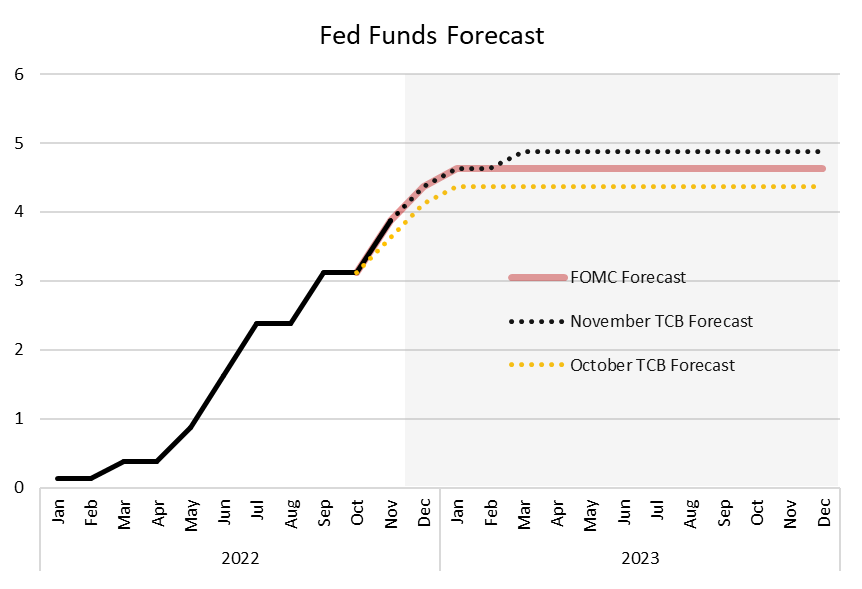
The Fed hiked by another 75 basis points in November and pushed the Fed Funds window to 3.75 – 4.00 percent. This increase raises the rate further into ‘restrictive’ territory (anything above 3 percent). The Fed also said that there will be no change to its ongoing plan to reduce the size of its balance sheet (currently $95 bln per month), which was first unveiled in May 2022. Today’s actions were unanimously approved by the members of the Federal Open Market Committee. The Federal Reserve’s actions today were widely anticipated, but its tone about the future shifted somewhat. In the policy statement, the FOMC said it will “take into account the cumulative tightening in monetary policy, the lags with which monetary policy affects economic activity and inflation, and economic and financial developments.” This new language suggests that this may be the last 75 basis point rate increase seen this tightening cycle. Indeed, Chair Powell said that a downward shift to a 50 basis point hike will be discussed at the December FOMC meeting. However, Powell also said that the terminal rate this tightening cycle is likely to be higher than the one the Fed forecast in September (4.50 – 4.75, with a midpoint of 4.625 percent). As a function of this, The Conference Board now expects rates to rise to 4.75 – 5.00, with a midpoint of 4.875, in March 2023. We do not expect to see the Fed lower rates next year. Since tightening started in March 2022, the Fed Funds rate has risen by a total of 375 basis point. As a function of this, interest rates throughout the economy have risen rapidly. Tighter policy has begun to cool the overall economy – though with a lag. While the labor market remains exceptionally tight, other parts of the economy have begun to slow (like consumption and business fixed investment) while other parts have begun to contract (like residential investment). As the full impact of this year’s Fed Funds hikes continue to weigh on businesses and consumers, economic activity will slow further – tipping the economy into a broad, but shallow, contraction. This recession should begin around the end of 2022 and is expected to last for three quarters.Insights for What’s Ahead
What were the Fed’s actions?
What does this mean for the US economy?

Fed Doves Get Nice Holiday Gift as CPI Inflation Drops
December 18, 2025
FOMC Decision: Do Three Dissents Mean a January Pause?
December 10, 2025
Fed December Decision: Not So Clear Cut
December 09, 2025
September Inflation Pause Bodes Well for Fed Cut
December 05, 2025
September Retail Sales Show Consumers Taking a Breather
November 25, 2025
New Truce Offers Stability after US–China Trade Plummeted in 2025
November 05, 2025
